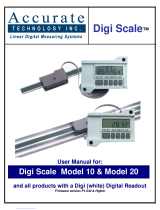
7. Please note that the adjustable frequency drive has
more voltage sources than L1, L2 and L3, when load
sharing (linking of DC intermediate circuit) or
external 24 V DC are installed. Make sure that all
voltage sources have been disconnected and that
the necessary time has elapsed before commencing
repair work.
Warning against unintended start
1. The motor can be brought to a stop by means of
digital commands, bus commands, references or a
local stop, while the adjustable frequency drive is
connected to line power. If personal safety consider-
ations (e.g., risk of personal injury caused by contact
with moving machine parts following an uninten-
tional start) make it necessary to ensure that no
unintended start occurs, these stop functions are not
sufficient. In such cases, the line power supply must
be disconnected or the Safe Stop function must be
activated.
2. The motor may start while setting the parameters. If
this means that personal safety may be compro-
mised (e.g., personal injury caused by contact with
moving machine parts), motor starting must be
prevented, for instance by use of the Safe Stop
function or secure disconnection of the motor
connection.
3. A motor that has been stopped with the line power
supply connected, may start if faults occur in the
electronics of the adjustable frequency drive,
through temporary overload or if a fault in the
power supply grid or motor connection is remedied.
If unintended start must be prevented for personal
safety reasons (e.g., risk of injury caused by contact
with moving machine parts), the normal stop
functions of the adjustable frequency drive are not
sufficient. In such cases, the line power supply must
be disconnected or the Safe Stop function must be
activated.
NOTE!
When using the Safe Stop function, always follow the
instructions in the Safe Stop section of the VLT
AutomationDrive FC 300 Design Guide.
4. Control signals from, or internally within, the adjust-
able frequency drive may in rare cases be activated
in error, be delayed or fail to occur entirely. When
used in situations where safety is critical, e.g., when
controlling the electromagnetic brake function of a
hoist application, these control signals must not be
relied on exclusively.
WARNING
High Voltage
Touching the electrical parts may be fatal - even after
the equipment has been disconnected from line power.
Also make sure that other voltage inputs have been
disconnected, such as external 24 V DC, load sharing
(linkage of DC intermediate circuit), as well as the motor
connection for kinetic backup.
Systems where adjustable frequency drives are installed
must, if necessary, be equipped with additional monitor-
ing and protective devices according to the valid safety
regulations, e.g., law on mechanical tools, regulations
for the prevention of accidents, etc. Modifications on the
adjustable frequency drives by means of the operating
software are allowed.
NOTE!
Hazardous situations shall be identified by the machine
builder/ integrator who is responsible for taking
necessary preventive means into consideration.
Additional monitoring and protective devices may be
included, always according to valid national safety
regulations, e.g., law on mechanical tools, regulations
for the prevention of accidents.
NOTE!
Crane, Lifts and Hoists:
The controlling of external brakes must always have a
redundant system. The adjustable frequency drive can
in no circumstances be the primary safety circuit.
Comply with relevant standards, e.g.,
Hoists and cranes: IEC 60204-32
Lifts: EN 81
Protection Mode
Once a hardware limit on motor current or DC-link voltage is
exceeded the adjustable frequency drive will enter “protection
mode”. “Protection mode” means a change of the PWM
modulation strategy and a low switching frequency to
minimize losses. This continues 10 sec after the last fault and
increases the reliability and the robustness of the adjustable
frequency drive while re-establishing full control of the motor.
In hoist applications, “protection mode” is not usable because
the adjustable frequency drive will usually not be able to leave
this mode again and therefore it will extend the time before
activating the brake – which is not recommended.
“Protection mode” can be disabled by setting par. 14-26 Trip
Delay at Inverter Fault to zero which means that the adjustable
frequency drive will trip immediately if one of the hardware
limits is exceeded.
Introduction FC 300 Programming Guide
MG.33.M9.22 - VLT
®
is a registered Danfoss trademark 1-5
1 1






















